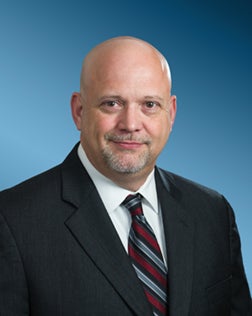 A MESSAGE FROM YOUR GENERAL MANAGER/CEO
A MESSAGE FROM YOUR GENERAL MANAGER/CEO
GARY RAYBON
ERCOT: Keeping the Grid Balanced in Texas
Last month we discussed where your power comes from and how it gets to your home. This month we will take a 50,000-foot overview of the Electric Reliability Council of Texas better known as ERCOT.
Until February 2021, ERCOT was a relatively unknown organization that while working in the background wields extraordinary power in Texas. It was formed in 1970 as an independent, not-for-profit organization responsible for overseeing the reliable and safe transmission of electricity over the power grid serving most of Texas.
First and foremost, ERCOT is tasked with balancing the flow of electricity across 90% of the state’s electric grid. This includes over 26 million consumers connected to over 710 power generation units through 46,500 miles of power lines. All of which are connected to one grid managed by ERCOT. At every minute of every day, the amount of power being generated (supply) must match the amount of power being used (demand).
This is a daunting task considering the sheer size of the ERCOT system and the many types of generation on the grid. Additions in recent years of intermittent generating sources (wind and solar) have made this job much harder. Keeping the system balanced with dispatchable generation (natural gas, coal, and nuclear) is a full-time job, but imagine adding in the uncertainty of generating units that cycle on and off at a moment’s notice when the wind stops blowing or the sun goes behind a cloud. I have often said if the public could see behind the curtain, they would be amazed by how seldom the power is off.
All utilities, including WCEC, connected to ERCOT’s grid are required to abide by their rules and protocols. If the grid becomes unbalanced—as was the case during Winter Storm Uri—it can cause dangerous conditions along power lines, inside substations and electrical equipment, and especially for generation units. During Uri, generation on the ERCOT system became dangerously low, causing ERCOT to balance the system by reducing demand. All connected utilities had to comply with reducing their part of the demand on the system. This is called load shed and is accomplished by rotating outages to consumers.
Fortunately, the actions of ERCOT and all participating utilities were able to prevent a total collapse of the entire grid. If the grid becomes too unstable, generation units are set to automatically shut down to prevent catastrophic damage. During Uri, our grid became very close to this automatic shutdown. If the grid had “gone dark,” the best estimates on restoring the grid to normal are two to three weeks at minimum.
Last month, we discussed that WCEC receives our power from South Texas Electric Cooperative. While STEC had enough power for all their cooperatives (they actually sold excess power into the market) during Winter Storm Uri, we were still required to shed load to help stabilize the grid.
ERCOT not only balances the flow of electricity on the grid, it also acts as a trading desk and clearinghouse for the electric market. It facilitates the buying and selling of electricity for wholesale and retail markets. We will discuss the electric market and how it affects the reliability of the grid in future columns.
We have all read in the news that ERCOT has and will continue to undergo changes because of Winter Storm Uri. Know that WCEC’s board and management are keeping abreast of these changes and offering insight and feedback as to how the changes will affect our members at the end of the line.

 A MESSAGE FROM YOUR GENERAL MANAGER/CEO
A MESSAGE FROM YOUR GENERAL MANAGER/CEO